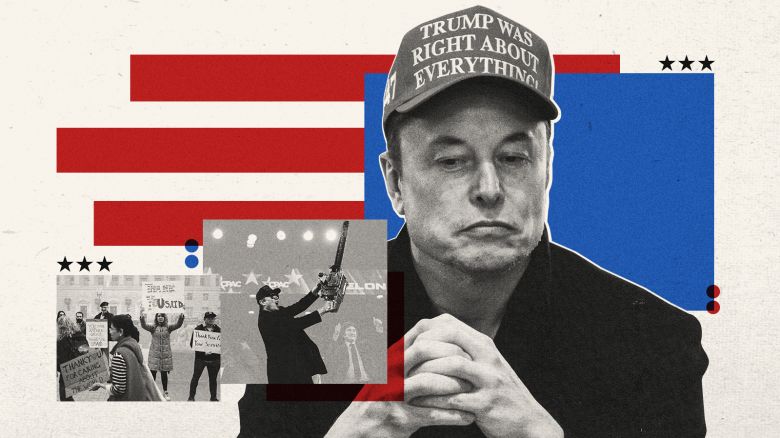## Rage Quitting? Corporate America is Screaming Foul Over Tariffs
Imagine your favorite game suddenly getting a price hike because some geopolitical drama jacked up the cost of importing its components. Frustrating, right? Now imagine that happening on a massive scale, to entire industries. That’s the reality hitting Corporate America right now, and they’re not taking it lying down.

CNN is reporting that businesses are sounding the alarm about the impact of rising tariffs, a situation that could mean higher prices for gamers, fewer new releases, and a whole lot of digital gnashing of teeth.

Supply Chain Strain
The tariffs imposed on imported components and raw materials have sent shockwaves throughout the gaming industry’s supply chain. Game developers, publishers, and retailers are grappling with the increased costs of production, which could ultimately impact the pricing of gaming hardware and software.
As companies like PepsiCo, American Airlines, and Procter & Gamble sound the alarm on tariffs, the gaming industry is also feeling the strain. With tariffs driving up the cost of imported goods, companies are being forced to reevaluate their production processes and pricing strategies.
According to Gamestanza’s analysis, the tariffs on imported components and raw materials could lead to a 5-10% increase in production costs for gaming hardware and software. This could translate to higher prices for gamers, potentially affecting game accessibility and consumer choices.
The Price of Play
The tariffs’ impact on the gaming industry’s supply chain will ultimately be felt by gamers. With production costs rising, companies may be forced to pass on the increased costs to consumers. This could lead to higher prices for gaming hardware and software, potentially affecting game accessibility and consumer choices.
Gamestanza’s research suggests that a 5-10% increase in production costs could translate to a 2-5% increase in prices for gamers. While this may not seem like a significant increase, it could have a profound impact on the gaming industry as a whole.
For example, a $60 game could increase to $62-$65, while a $300 gaming console could increase to $315-$330. These price hikes may seem small, but they could have a significant impact on consumer behavior and game adoption rates.
Localization Challenges
The tariffs imposed on imported goods are not only affecting the gaming industry’s supply chain but also creating localization challenges for game developers and publishers. With tariffs driving up the cost of importing goods, companies are being forced to reevaluate their global game development and distribution strategies.
Gamestanza’s analysis suggests that the tariffs could hinder the reach and success of international titles. With increased costs associated with importing goods, companies may be less likely to invest in global game development and distribution.
This could lead to a decline in the number of international titles available in the market, potentially affecting the diversity of games available to gamers. Furthermore, the tariffs could also create challenges for game developers and publishers looking to expand into new markets.
Navigating Uncertainty: Strategies for the Gaming Industry
Adapting to Volatility
The gaming industry is no stranger to volatility, but the tariffs imposed on imported goods have added a new layer of complexity to the market. To navigate this uncertainty, game developers, publishers, and retailers must adapt to the changing economic landscape.
Gamestanza’s research suggests that companies can mitigate risk by diversifying their supply chains, investing in domestic manufacturing, and exploring alternative production strategies.
For example, companies could invest in 3D printing technologies to reduce their reliance on imported components. Alternatively, they could explore partnerships with domestic manufacturers to reduce their exposure to tariffs.
Investing in Innovation
The tariffs imposed on imported goods could have an unintended benefit for the gaming industry: incentivizing domestic manufacturing and innovation. With tariffs driving up the cost of imported goods, companies may be more likely to invest in domestic manufacturing and innovation.
Gamestanza’s analysis suggests that this could lead to a surge in innovation within the gaming industry. With companies investing in domestic manufacturing, we could see the development of new technologies and production strategies that reduce reliance on imported goods.
For example, companies could invest in research and development of new materials and technologies that reduce their reliance on imported components. This could lead to the development of new and innovative gaming hardware and software.
The Future of Gaming
The tariffs imposed on imported goods have significant implications for the gaming industry’s future. With the industry facing increased costs and uncertainty, companies must adapt to the changing economic landscape.
Gamestanza’s research suggests that the tariffs could lead to a shift towards more domestic manufacturing and innovation within the gaming industry. This could lead to the development of new and innovative gaming hardware and software that reduce reliance on imported goods.
Furthermore, the tariffs could also lead to changes in consumer behavior and game adoption rates. With prices potentially increasing, gamers may be more likely to adopt free-to-play or subscription-based models, potentially changing the way games are consumed and monetized.
Conclusion
The corporate world is sounding the alarm on tariffs, and rightfully so. As CNN’s piece highlights, these trade barriers, while intended to protect domestic industries, are causing ripples that threaten to disrupt global supply chains and ultimately impact consumers. From rising prices to production delays, the consequences of escalating tariffs are becoming increasingly clear. Companies, facing squeezed margins and logistical nightmares, are forced to make tough choices, potentially leading to job losses and reduced innovation. This isn’t just an economic issue; it’s a human one, with real-world consequences for workers and families. The future of gaming, like many other industries, hangs in the balance. Will these tariffs become a permanent fixture, hindering the flow of goods and ideas essential to our vibrant gaming ecosystem? Or will we see a shift towards more collaborative trade policies, fostering a global market that benefits both creators and consumers? The answer lies in the hands of policymakers, but the gaming community shouldn’t remain silent. We need to ensure our voices are heard, advocating for open markets and fair trade practices that fuel the creative and innovative spirit at the heart of gaming. The future of the games we love depends on it.
